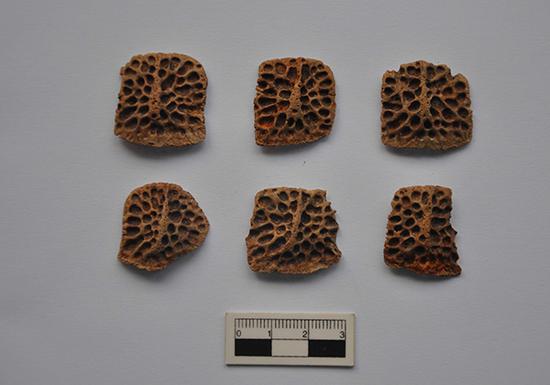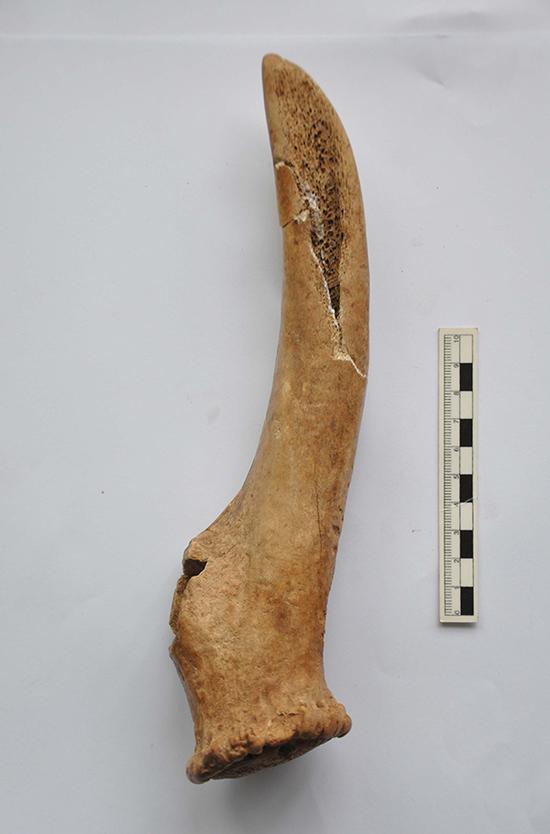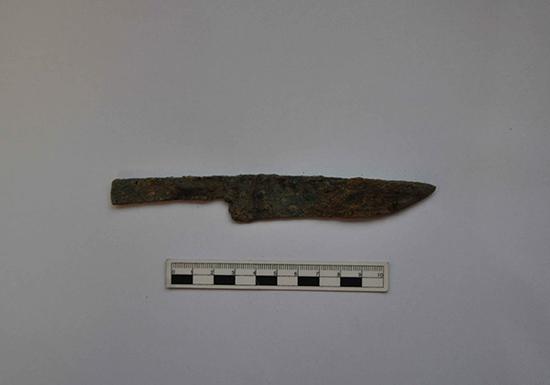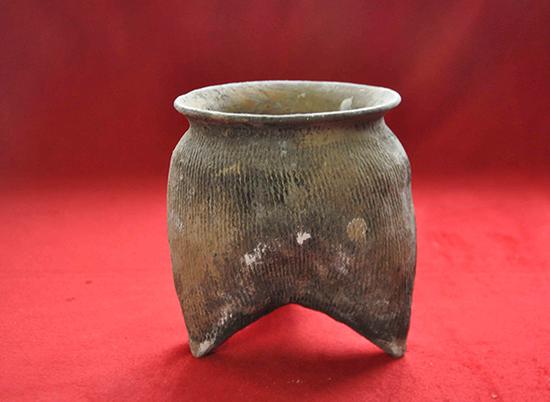New archaeological discoveries in Shaanxi Province: in ancient times there were crocodiles in the wild | crocodile | _ in Shaanxi Province news

>
Once upon a time, XI ' an, Southwest may be in the vicinity of Lake Mountain, lush, and infested with crocodiles in the wild. On January 11, 2017, the Shaanxi Provincial Archaeological Research Institute released its 2016 Haojing harvest archaeological excavation of the site, site a bone plate 12 crocodiles found in the pits, for such a rage for Wang picture provided evidence.
Crocodile bones was first found in the ash pit Board
Haojing site is home to the capital of the Western Zhou dynasty, what is now Northwest zhangan district, Xian City. Haojing began unearthing the ruins from the 30 's of the last century, 2012, the Shaanxi Provincial Archaeological Institute archaeological excavations on its continuous. Archaeological excavations in 2016, a new discovery has surprised researchers.

>
Archaeological excavations mainly at Haojing site last year to the East, in opening an ash pit, archaeologists found 12 crocodile bone plate, which is in XI ' an in the surrounding ancient ruins excavations were first found in crocodile bone plate, it's no wonder archaeologists have repeatedly surprising.
Ash pits were abandoned in the archaeology of the ancient site of cellar holes, cellars, collectively, find alligator bone ash pits were irregular-shaped, about more than more than 10 square meters. The crocodile bones dark brown, shaped round, honeycomb-shaped holes on the surface. "Each Mahjong block size, archaeological expert at judging our animals are alligator bone. "The Shaanxi Provincial Archaeological Institute of archaeology of Shang and Zhou, Director, researcher, picks Beijing Yue Lianjian archaeological team captain said he had also seen information, recognize that at first glance are a few crocodile bones, later identified by experts, really good.
Archaic in the Guanzhong area moist climate
Egg-laying of the crocodile is a cold-blooded aquatic animal, and so far found one of the earliest and most primitive animals alive. The Han Chinese know South Alligator, in the book of Tang-song code many of its records, since Ming and Qing dynasties can be found in the coastal islands, but its activities have not been recorded in the Guanzhong area.

>
"Alligator with a few live in temperate areas, mostly living in tropical and subtropical areas, rivers, lakes and water of swamps, we suggested that the Western Zhou dynasty in Haojing Southeast may have large areas of waters or lakes. "Yue Lianjian introduced earlier in the archaeological excavations in the region, also found a large number of shells, there are pottery net sinkers, if such speculation is valid, then to show that in ancient times, moist climate in Guanzhong area, Lake dense, fisheries are more developed.
"In this climate and natural conditions, there were crocodiles in the wild is not surprising. "Yue Lianjian view, Feng Gao crocodile unearthed bone plate for the study of ecological distribution of Western Zhou dynasty crocodile provides important information. He describes, in more northerly latitudes than Xian previously been found in crocodile bone, it would appear that the ancient date, climate and great changes have taken place in the Guanzhong area. Experts also speculated that, then someone might be feeding the crocodile, crocodile skin drum, archaeological finds made of crocodile skin Tuo drums.
Find living water well of Western Zhou dynasty site

>
It is understood that Haojing ruins excavated archaeological excavation pits last year 102 seats, 10 tombs, another wells 4 eyes, pottery kiln 2, room address 1. Unearthed a large amount of pottery, bronze, stone, bone, clam, angle and other types of artifacts and relics. Pottery a surname, pots, beans, dishes, such as GUI, Yan, mostly for middle and late Western Zhou; bronze Ding, Al Gore (the residual), such as horses. Another pottery net sinkers, antler, clam knives, axes, larger stone, copper, copper arrowheads, copper cone cutting tool.
Last year found the number of pits more, shapes, such as round, oval, rectangular and irregular-shaped. Found in the tombs, large earthen soils in form Kuang wooden chambered tombs, there are only funerary objects place no small tombs. Also found a rectangular pit pit excavation depth of approximately 7-8 meters, presumably for domestic water wells. In addition, the shape is circular earthen pottery kilns found, by a fire door, fireplace grate, burner, kiln room, kiln formed, which save the basic integrity of a pottery kiln, firing the kiln wall blue.
In addition, also found in the excavated pits number, well preserved wheat grain carbide, in the ruins of Feng Gao revealed for the first time for studies of Western Zhou dynasty's food crop varieties and Agriculture provide a valuable archaeological material. (CCTV reporter Liu Haitao Li Zhi)
>: Tang Kun Qu SN117
Article keywords:Crocodile in Shaanxi Province
I want feedback
Save a Web page
CCTV
陕西省考古新发现:远古时期有野生鳄鱼出没|鳄鱼|陕西_新闻资讯

>
曾几何时,西安的西南一带可能是湖泊连绵,水草茂盛,还有野生的鳄鱼出没其间。2017年1月11日,陕西省考古研究院发布2016年镐京遗址考古发掘收获,遗址中间一灰坑里发现的12块鳄鱼骨板,为这样一幅水泽汪国景象提供了佐证。
灰坑里首次发现鳄鱼骨板
镐京遗址是西周王朝的都城所在地,位于现在的西安市长安区西北。镐京遗址发掘从上世纪三十年代就已开始,2012年至今,陕西省考古研究院对其连续进行考古发掘。在2016年的考古发掘中,一个新发现令考古人员也感到意外。

>
去年的考古发掘主要集中在镐京遗址的东部,在挖开的一个灰坑里,考古人员发现了12块鳄鱼骨板,这也是在西安周边古遗址考古发掘中,首次发现的鳄鱼的骨板,难怪考古人员也连声称奇。
灰坑是考古界对古遗址里一些废弃的窖穴、地窟等的统称,发现鳄鱼骨板的灰坑呈不规则形,面积大约有十多个平方米。这些鳄鱼骨板呈深褐色,形状有方有圆,表面有蜂窝状空穴。 “每块有麻将块大小,我们的动物考古专家一看就判断是鳄鱼骨。”陕西省考古研究院商周考古研究室主任、研究员、镐京遗址考古队队长岳连建说,自己以前也看过相关资料,第一眼就认出那是几块鳄鱼骨板,后经专家鉴定,果然不错。
关中地区远古时气候温润
鳄鱼是一种冷血的卵生水生动物,也是迄今发现活着的最早和最原始的动物之一。中国汉代始知南方有鳄,在一些唐宋典册中多有其记载,明清以来偶见于沿海岛屿,但其在关中地区有活动尚未有记录。

>
“鳄鱼除少数生活在温带地区外,大多生活在热带、亚热带地区的河流,湖泊和多水的沼泽,我们由此推测西周时在镐京的东南可能有大面积的水域或者湖泊等。”岳连建介绍,此前在这一区域的考古发掘中,还发现有大量的蚌壳,还有陶制的网坠,如果这些推测成立,那么也可以说明在远古时代,关中地区气候温润,湖水茂密,渔业也较为发达。
“在这样的气候和自然条件下,有野生的鳄鱼出没也就不奇怪了。”岳连建认为,丰镐遗址出土的鳄鱼骨板,为研究西周时期鳄鱼的生态分布提供了重要资料。他介绍,在比西安更靠北的纬度地区以前也发现过鳄鱼骨,这样看来,远古至今,关中地区的气候还是发生了较大变化。据此专家还推测,那时候也可能有人饲养鳄鱼,用鳄鱼皮制作鼓等,此前考古也发现用鳄鱼皮制作的鮀鼓。
发现西周生活用水井遗迹

>
据了解,去年镐京遗址考古发掘发掘清理灰坑102座、墓葬10座,另外还有水井4眼、陶窑2座、房址1座。出土了大量的陶器、铜器、石器、骨器、蚌器、角器等各类器物遗物。其中陶器有鬲、罐、豆、盂、簋、甗等,多为西周中晚期器物;铜器有鼎、戈(残)、车马器等。另有陶网坠、鹿角器、蚌刀、石斧、砺石、铜镞、铜锥、铜削刀等。
去年发现的灰坑数量较多,形制有圆形、椭圆形、长方形及不规则形等。在发现的墓葬中,有形制较大的竖穴土圹木椁墓,还有仅能容身没有任何随葬品的小型墓葬。发掘中还发现一些长方形的窖坑,深度大约7—8米,推测为当时的生活用水井。另外,发现的陶窑形制为圆形竖穴式,由火门、火塘、窑篦、火眼、窑室组成,其中的一座陶窑保存基本完整,窑室壁面已烧成青灰色。
另外,在发掘的灰坑中还发现数量较多、保存较好的碳化小麦颗粒,这也是丰镐遗址中首次发现,为研究西周的粮食作物品种及农业考古等提供了宝贵的实物资料。(央视记者 李志 刘海涛)
>责任编辑:瞿崑 SN117
文章关键词: 鳄鱼 陕西
我要反馈
保存网页
央视